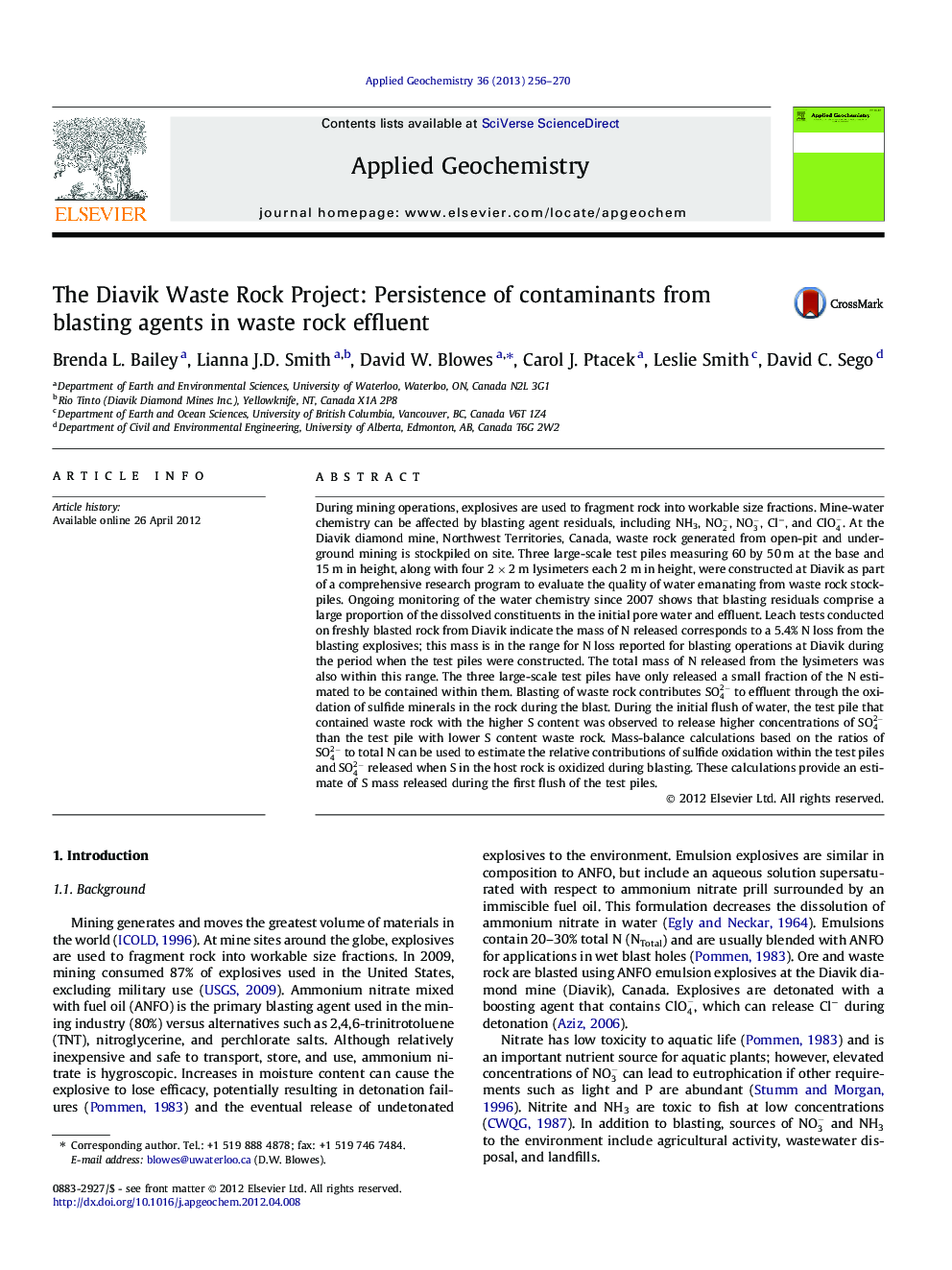| کد مقاله | کد نشریه | سال انتشار | مقاله انگلیسی | نسخه تمام متن |
|---|---|---|---|---|
| 4436001 | 1620255 | 2013 | 15 صفحه PDF | دانلود رایگان |

During mining operations, explosives are used to fragment rock into workable size fractions. Mine-water chemistry can be affected by blasting agent residuals, including NH3, NO2-, NO3-, Cl−, and ClO4-. At the Diavik diamond mine, Northwest Territories, Canada, waste rock generated from open-pit and underground mining is stockpiled on site. Three large-scale test piles measuring 60 by 50 m at the base and 15 m in height, along with four 2 × 2 m lysimeters each 2 m in height, were constructed at Diavik as part of a comprehensive research program to evaluate the quality of water emanating from waste rock stockpiles. Ongoing monitoring of the water chemistry since 2007 shows that blasting residuals comprise a large proportion of the dissolved constituents in the initial pore water and effluent. Leach tests conducted on freshly blasted rock from Diavik indicate the mass of N released corresponds to a 5.4% N loss from the blasting explosives; this mass is in the range for N loss reported for blasting operations at Diavik during the period when the test piles were constructed. The total mass of N released from the lysimeters was also within this range. The three large-scale test piles have only released a small fraction of the N estimated to be contained within them. Blasting of waste rock contributes SO42- to effluent through the oxidation of sulfide minerals in the rock during the blast. During the initial flush of water, the test pile that contained waste rock with the higher S content was observed to release higher concentrations of SO42- than the test pile with lower S content waste rock. Mass-balance calculations based on the ratios of SO42- to total N can be used to estimate the relative contributions of sulfide oxidation within the test piles and SO42- released when S in the host rock is oxidized during blasting. These calculations provide an estimate of S mass released during the first flush of the test piles.
► Blasting residuals and undetonated explosives in waste rock were studied.
► High concentrations of residuals were recorded in the first flush of water.
► Sulfate was released from the oxidation of sulfur during blasting.
► Sulfate from blasting is correlated to the sulfide content of the waste rock.
► The mass of sulfur released due to blasting was estimated.
Journal: Applied Geochemistry - Volume 36, September 2013, Pages 256–270